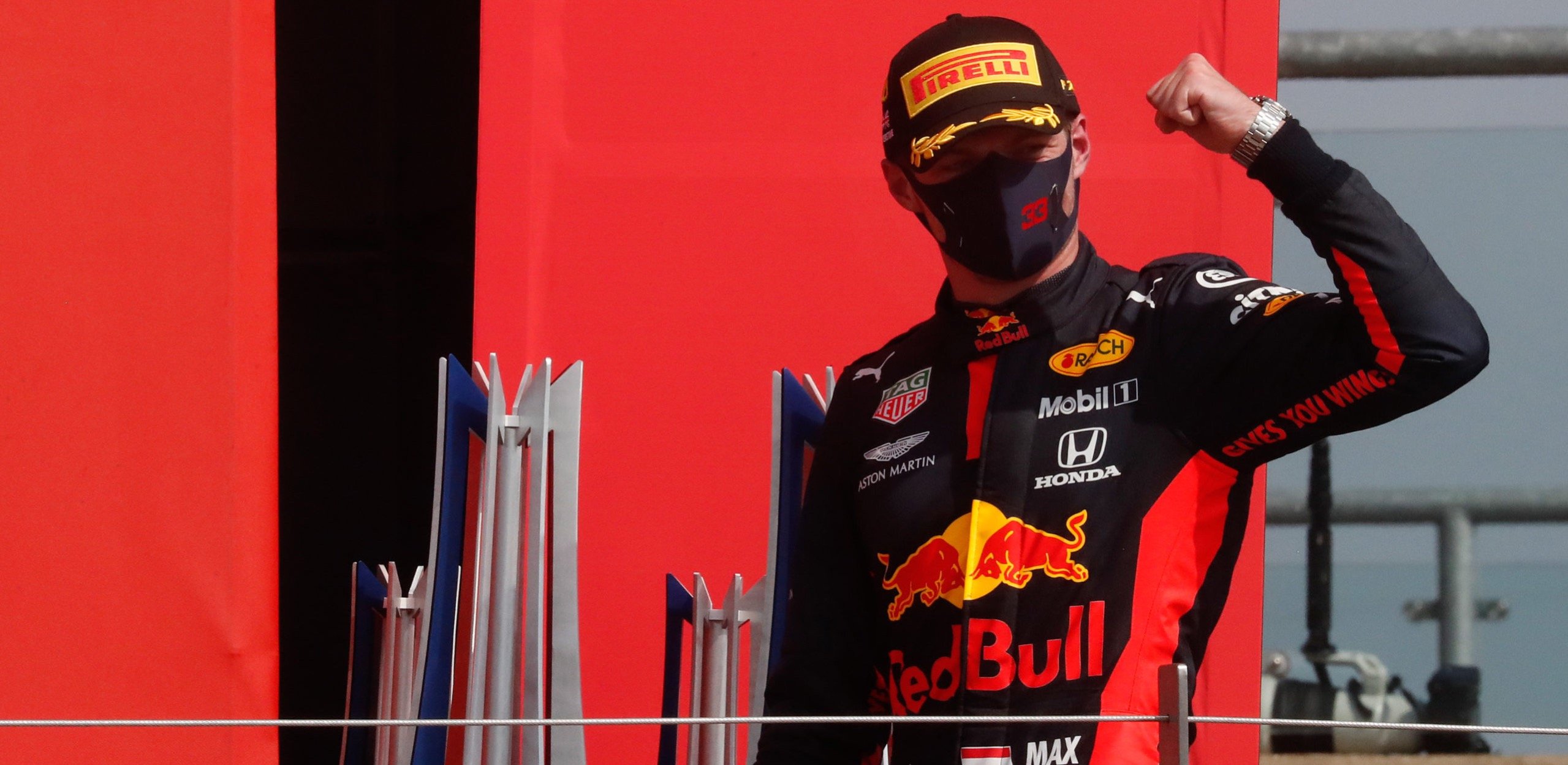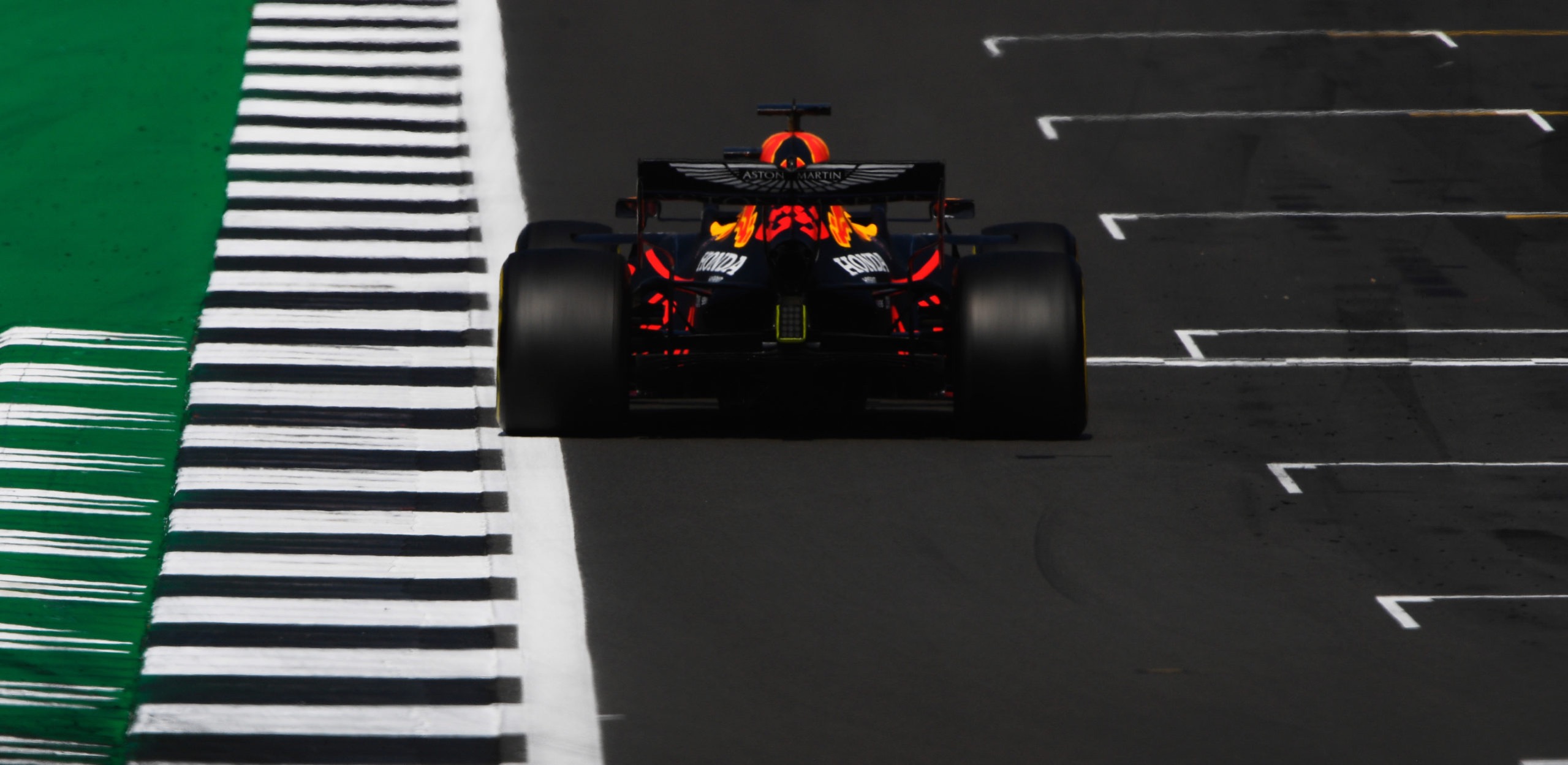
Max Verstappen seized the path Mercedes feared to tread at Silverstone and produced the upset of the season by easily defeating Lewis Hamilton to win the Emirates Formula 1 70th Anniversary Grand Prix 2020.
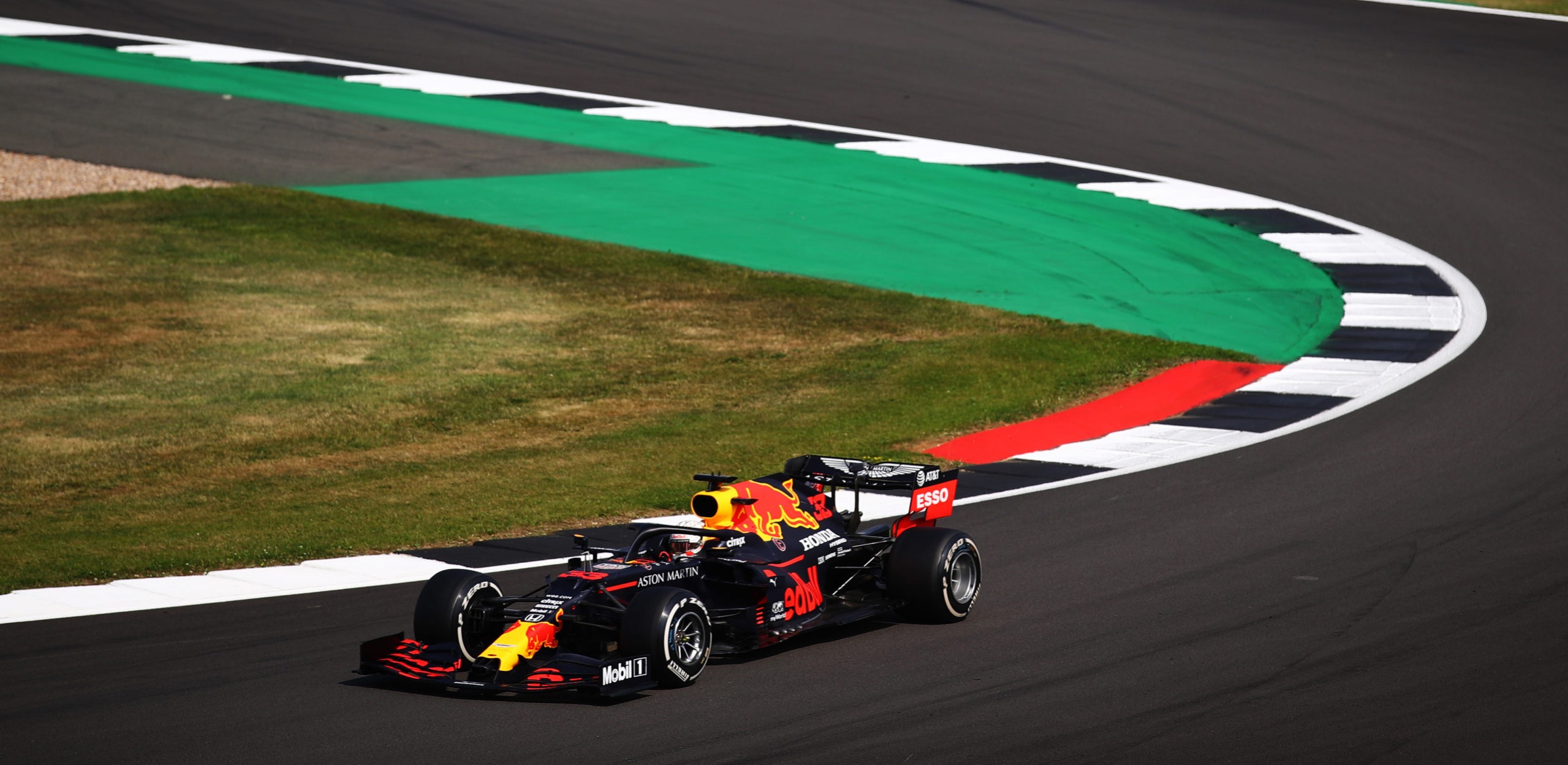
Lewis Hamilton continued his dominance of the new Formula One season by finishing fastest in FP2. Hamilton saw off Valtteri Bottas by 0.176 seconds at Silverstone after the Finn went quickest in the morning’s FP1 session.
However, when it counted, Hamilton stumbled as Bottas took the thrilling pole fight by just six-hundredths of a second. Judging by Hamilton’s disappointment, Bottas knew that come Sunday, he would joust with a 110% determined Brit entering Abbey on Lap 1.
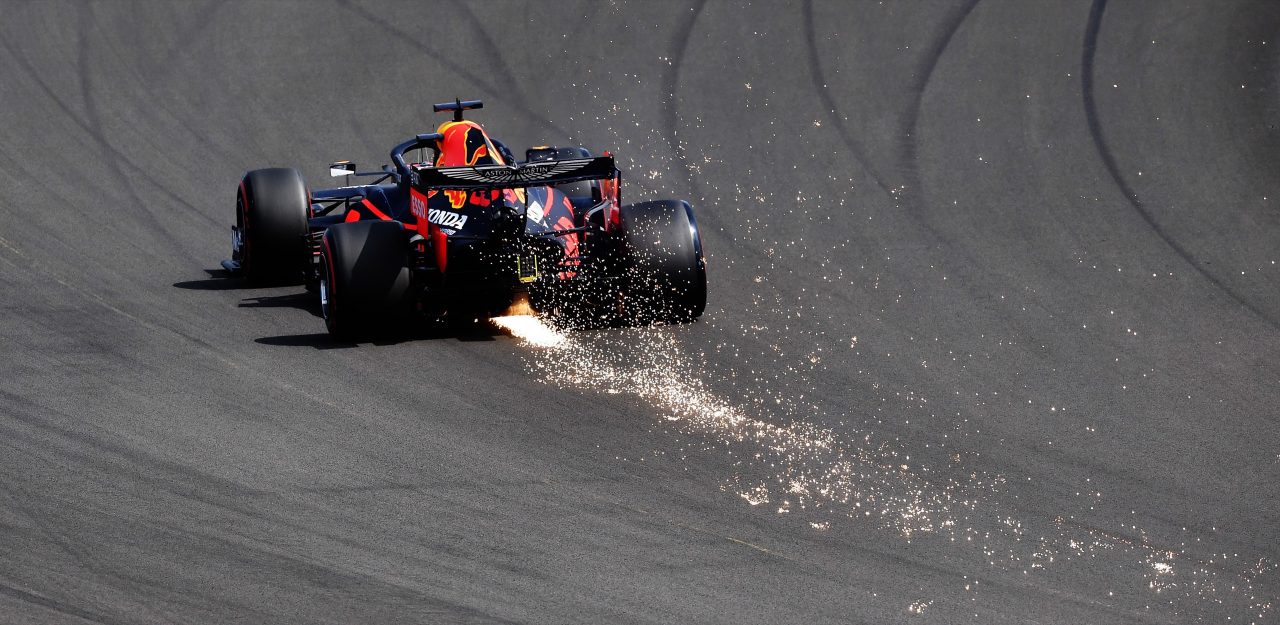
Another Q3 a surprise was Nico Hulkenberg qualifying P3 as a substitute for Racing Point’s Sergio Perez. Last weekend, thanks to an engine glitch, he couldn’t even start the race, having qualified in a slightly disappointing 13th. But this weekend, he was the quickest “non- Mercedes” car. He was even a full half-second ahead of teammate Lance Stroll.
The most controversial Q2 qualifier was Max Verstappen, who placed ninth and just managed to sneak through to Q3 using the hard compound tyres. That meant he would start the race on them, the only driver in the top 10 to do so. Why?
Red Bull was betting that by going against the normal, Verstappen could stay on his hard compound starting tyres longer and upset Mercedes’ expected two-stop race strategy. To succeed, Verstappen would run much longer into the race on the hard tyre and might need only the one tyre stop. Mercedes believed that, in the heat and winds of Silverstone which affected their team cars, Red Bull’s strategy would be a step too far.
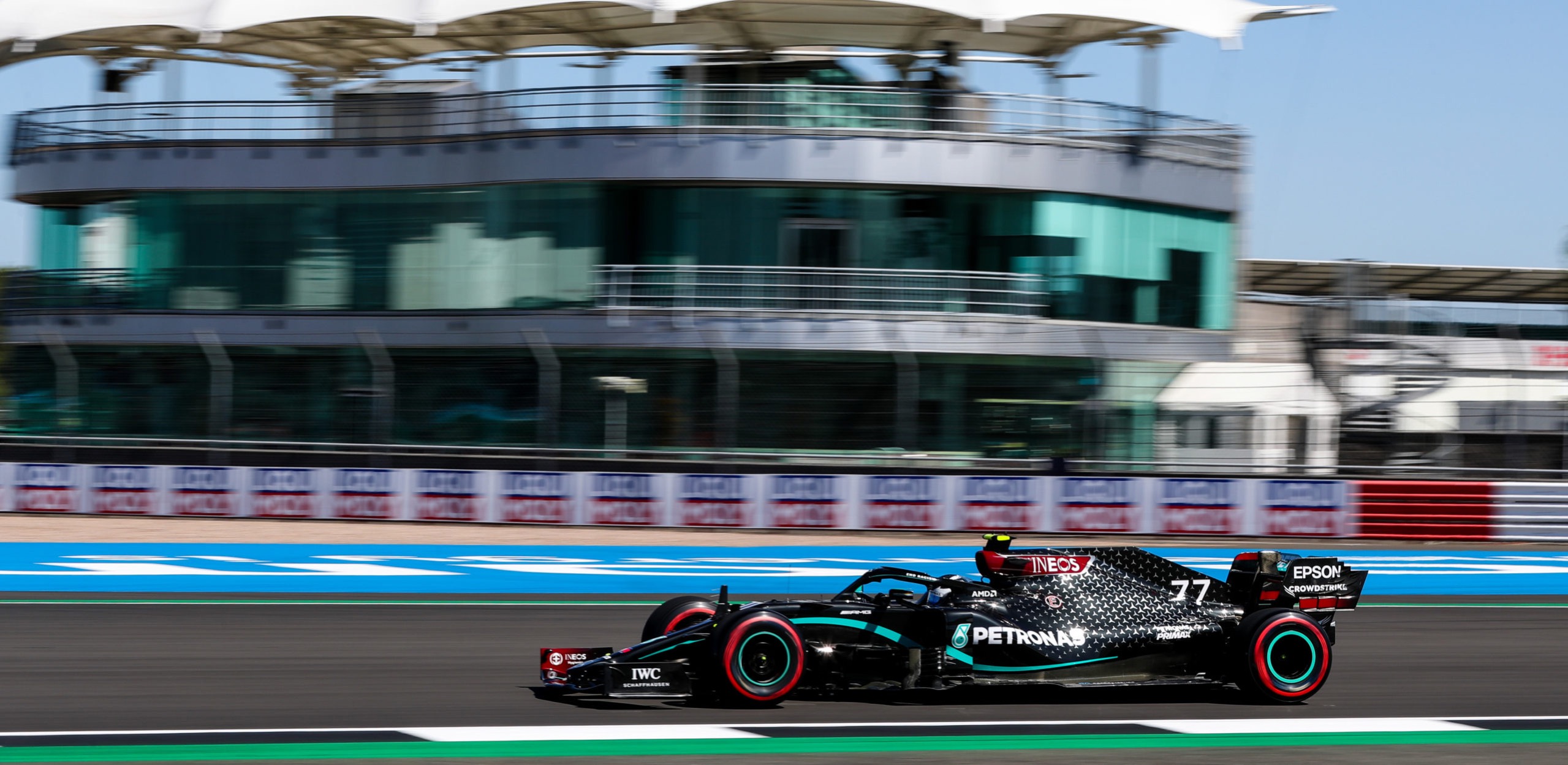
Everyone in the top 10 apart from Verstappen would start on the mediums, with Vettel, Sainz, Kvyat and Raikkonen starting on the hards – not one driver starting on the soft tyres.
At the start, Bottas kept the lead with a decent start, with Hamilton mere yards behind. Hulkenberg’s third-place vanished thanks to Verstappen’s rocket start.
Deep in traffic, Vettel spun and luckily touched no one. The German lost his Ferrari after entering the first turn too tight and inside of the corner. He rejoined at the tail end of the train.
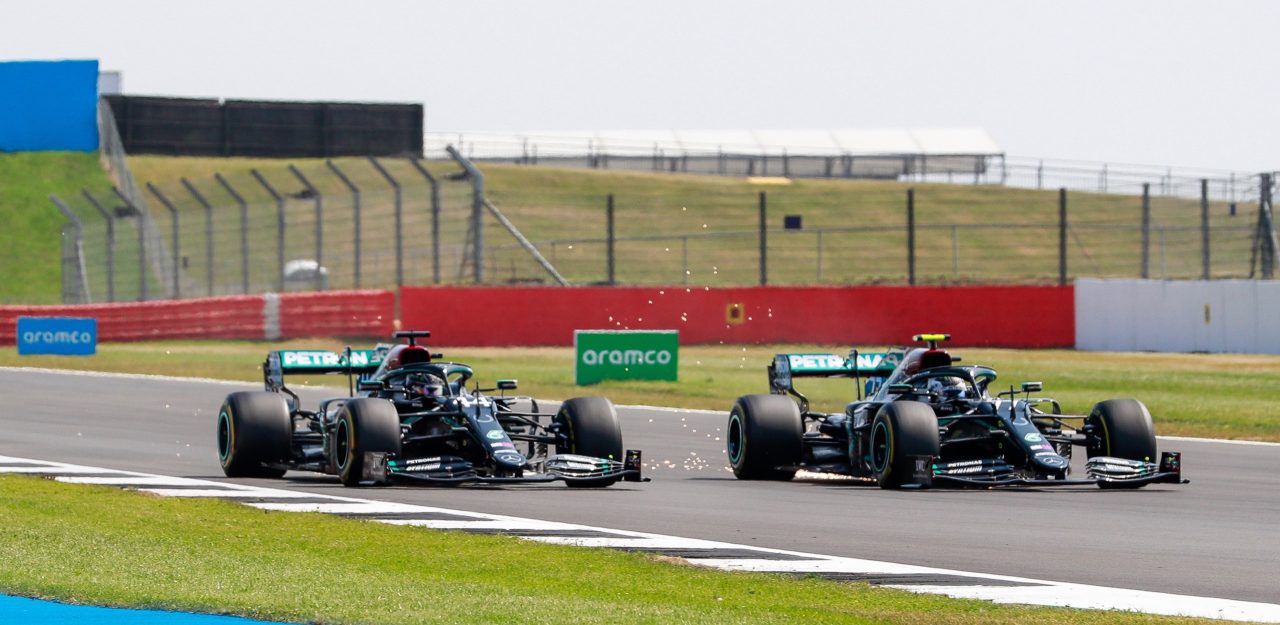
Meanwhile, Hamilton tried a move on the outside in Brooklands, but Bottas remained on the inside. Hamilton then closed up going into Copse, but once again the Brit couldn’t get quite close enough. Hulkenberg in P4 fended off teammate Lance Stroll Racing Point and remained in front starting Lap 2.
By Lap 4, Hamilton and Bottas were separated by a second, despite Hamilton using DRS over the last two laps. Verstappen pulled out time ahead of Hulkenberg, who lead Stroll by about 1.5s. Alex Albon’s Red Bull wasn’t making any forward progress, while Russell’ Williams had dropped back to P17 and was about to have the charging Vettel on his gearbox.
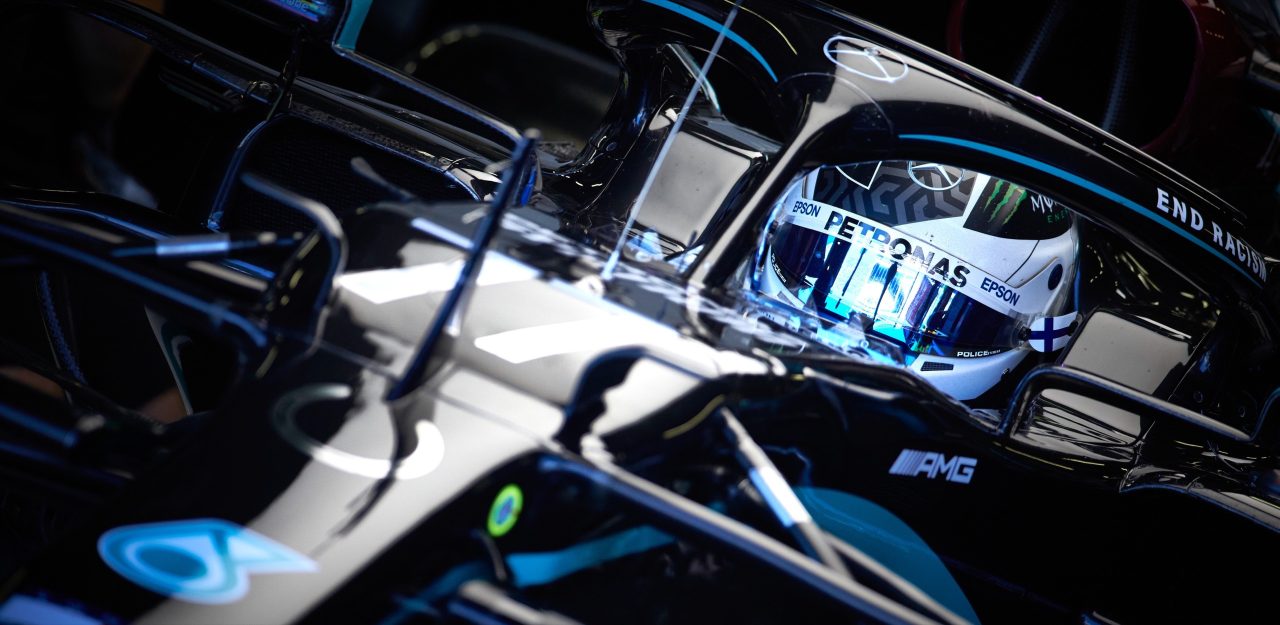
All seemed as expected at the start of Lap 5, as Bottas increased his lead to 1.3s, thereby pulling a little further outside of Hamilton’s DRS range for the first time in the race. Verstappen was 2.4s further back but 3.6s ahead of Hulkenberg.
Then suddenly, on Lap 6, heat spoiled the Finn’s party. Mercedes engineers told Bottas his front left tyre was critical for temperature, while Hamilton took a couple of tenths out of Bottas’s lead.
Even more ominous, Verstappen was now threatening, having closed to within 1.6s behind Hamilton on Lap 8. The Dutchman had just gained three tenths on Hamilton, who was being slowed by Bottas’ dirty air.
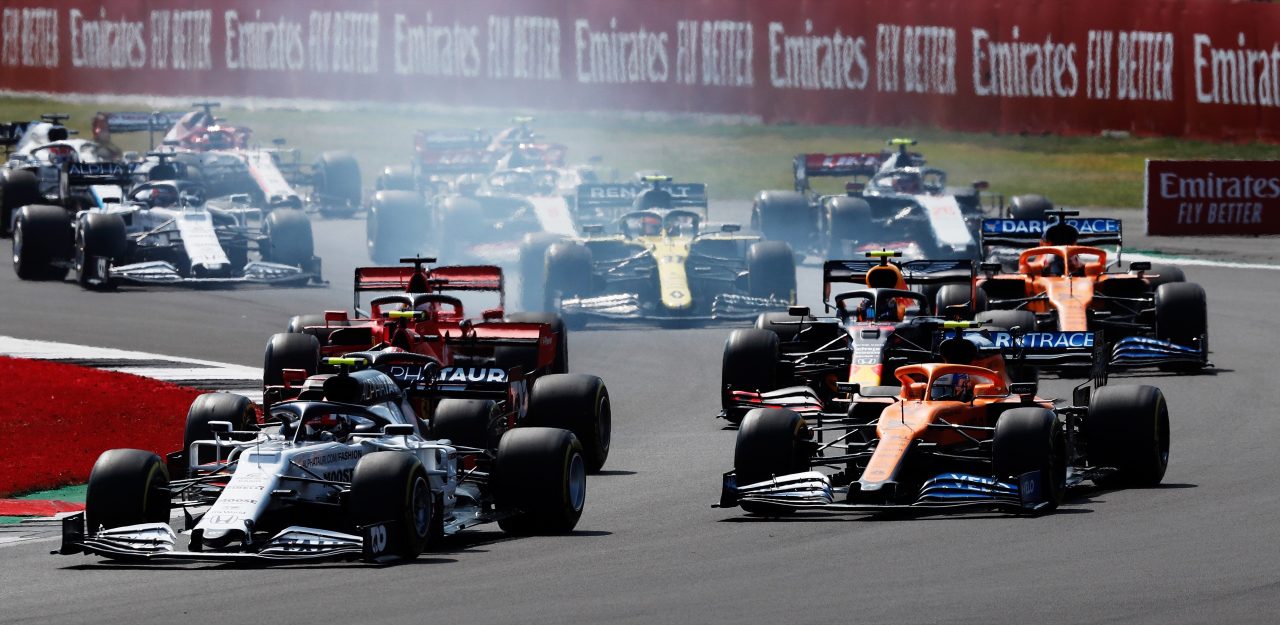
The Mercedes duo were not the only cars struggling with blisters. Plenty of drivers started pitting early, going onto a medium-hard-hard strategy, with 20 or so laps on each set of the hards.
By Lap 12, Verstappen was all over Hamilton, the Brit lamenting to his engineer, ‘The rears are finished.” Bottas pitted the next lap, returning in P6. Then Hamilton stopped for better rubber. Max Verstappen inherited the lead on Lap 14, with 38 laps remaining. Hamilton returned to the track behind Ferrari’s Charles Leclerc.
Verstappen was now serenely motoring away. Rather than taking on tyres as well, the Dutchman increased speed. By Lap 23, he was the quickest man on track, taking 1.4s from both Mercedes.
Finally, on Lap 27, Verstappen pitted for mediums. He returned just behind Bottas but sailed around the outside of the Finn moments later at Luffield for the lead.
On Lap 31, Red Bull told Verstappen to reveal his full pace; the Dutchman responded with the fastest lap. He then pitted on Lap 32, as did Bottas. Hamilton inherited the lead, as Mercedes suggested it would instead be Hamilton who made just one stop. By Lap 37, Verstappen was 11s behind Hamilton with 16 laps remaining – with the Dutchman biding his time, as he believed Hamilton’s tyres wouldn’t last.
The Dutchman was correct. Hamilton pitted on Lap 42, returning in P4. While Hamilton slipped past Leclerc and Bottas, to finish P2, it was Verstappen who took the worst Silverstone had and then delivered a brilliant victory against the might of Mercedes.
The Spanish Grand Prix is just a week away, where the temperatures should be nearly identical. We can’t wait!
